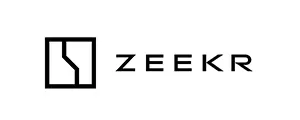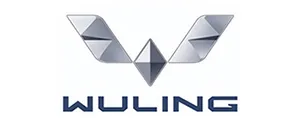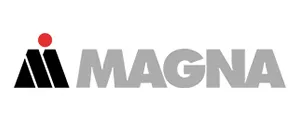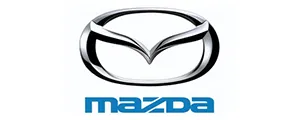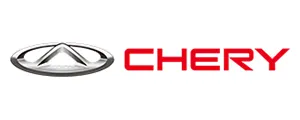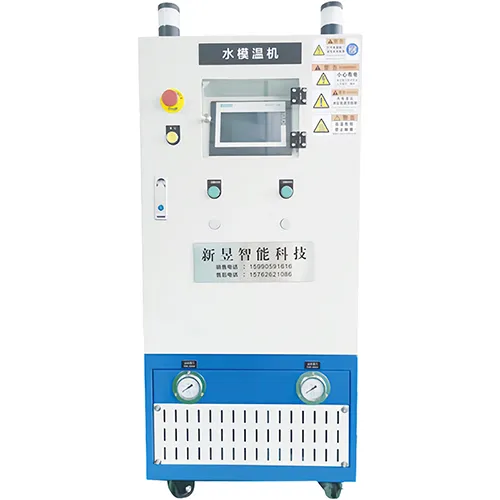
Die casting in the automotive parts industry and injection molding industry, applied to mold cores, thin-walled parts, structural components, and large sliders, with a maximum heating temperature up to 220℃.
| Model |
|
|
|
| Max. heating temperature | 180℃ | 180℃ | 220℃ |
| Power supply | 3N-380V-50Hz | 3N-380V-50Hz | 3N-380V-50Hz |
| Heat transfer medium | Water | Water | Water |
| Cooling mode | Indirect cooling | Indirect cooling | Indirect cooling |
| Heating power | 24kW+24kW | 24kW+24kW | 24kW+24kW |
| Pump power | 1.5kW+1.5kW | 3kW+3kW | 3kW+3kW |
| Max. pump head | 60+60m | 80+80m | 110+110m |
| Max. pump flow | 90+90L/min | 100+100L/min | 150+150L/min |
| Max. power consumption | 51kW | 54kW | 54kW |
| Safety & alarm function | Pump reversal/Phase lack/Water shortage/Overtime/Overload /Undervoltage | ||
| Cooling water piping | ZG3/4 inch | ZG3/4 inch | ZG3/4 inch |
| Circulating water piping | ZG3/4 inch | ZG3/4 inch | ZG1/inch |
| Machine dimensions | 1260×600×1400mm | 1370×600×1440mm | 1500×670×1500mm |
PLC + HMI combination with closed-loop adjustment to ensure stability.
One-piece stainless steel piping reduces the number of joints compared with traditional spliced pipelines. Real-time monitoring of each pipeline flow, with HMI one-click cooling start function, no need for manual pipeline switching, improving operation efficiency.
The electrical control box is physically separated from the heating zone and water system, reducing the impact of high temperature and moisture on electrical components (such as PLC, relays, circuit boards), and extending the service life of the electrical system.
Displays temperature curves, flow data, and equipment status (running/alarm/standby) clearly. Supports touch operation, parameter setting, and historical record queries.
Designed with high temperature resistance and corrosion resistance (suitable for complex water quality scenarios), with high heating efficiency and fast thermal response, ensuring temperature control accuracy (within ±0.5℃).
Supports standard industrial communication protocols (such as Modbus RTU/TCP, Profinet). Can collect temperature, flow, and operating status data in real time and upload to factory management systems (such as MES, SCADA), enabling digital monitoring and traceability of the production process. Can also link with other equipment (such as die casting machines, injection molding machines, robots) through signal interfaces and adapt to different brands of sensors and actuators, making it easy to integrate into existing production lines or future upgrades.
The water based mold temperature controller uses water as the heat transfer medium. Through heating, cooling, and circulation control, it precisely regulates the temperature of molds or other controlled equipment. The core principle is: heating tubes heat the water, or the cooling circuit (such as by connecting chilled water) lowers the temperature of the water. A circulation pump then delivers the constant-temperature water into the internal channels of the mold (or other equipment requiring temperature control). Heat exchange achieves dynamic balance of mold temperature, while sensors provide real-time feedback to the control system (such as PLC) for closed-loop adjustment, ensuring temperature remains within the set range (accuracy typically ±0.5℃ to ±1℃).
We provide complete mold temperature control solutions to help you achieve stable quality, shorter cycles and reduced costs. Let’s find the right system for your needs.
Standard warranty is 12 months from acceptance. It covers non-human faults with free repairs, replacement of faulty parts, and technical support.
A response system is in place with performance tracking. If service is unsatisfactory, customers may escalate complaints to customer support, which ensures follow-up by assigned personnel.
